
The Tohono Oʼodham are a Native American people of the Sonoran Desert, residing primarily in the U.S. state of Arizona and the northern Mexican state of Sonora. The United States federally recognized tribe is the Tohono Oʼodham Nation.
Oʼodham or Papago-Pima is a Uto-Aztecan language of southern Arizona and northern Sonora, Mexico, where the Tohono Oʼodham and Akimel Oʼodham reside. In 2000 there were estimated to be approximately 9,750 speakers in the United States and Mexico combined, although there may be more due to underreporting.
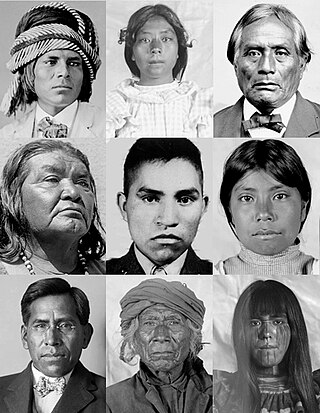
The Akimel O'odham, also called the Pima, are a group of Native Americans living in an area consisting of what is now central and southern Arizona, as well as northwestern Mexico in the states of Sonora and Chihuahua. The majority population of the two current bands of the Akimel O'odham in the United States are based in two reservations: the Keli Akimel Oʼodham on the Gila River Indian Community (GRIC) and the On'k Akimel O'odham on the Salt River Pima-Maricopa Indian Community (SRPMIC).

Uto-Aztecan, Uto-Aztekan is a family of indigenous languages of the Americas, consisting of over thirty languages. Uto-Aztecan languages are found almost entirely in the Western United States and Mexico. The name of the language family was created to show that it includes both the Ute language of Utah and the Nahuan languages of Mexico.

Zuni is a language of the Zuni people, indigenous to western New Mexico and eastern Arizona in the United States. It is spoken by around 9,500 people, especially in the vicinity of Zuni Pueblo, New Mexico, and much smaller numbers in parts of Arizona.
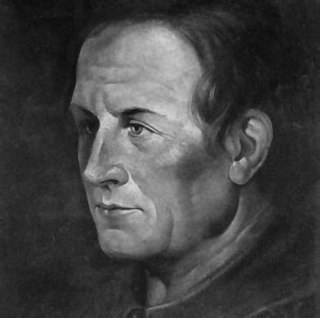
Eusebio Francisco Kino, SJ, often referred to as Father Kino, was an Italian Jesuit, missionary, geographer, explorer, cartographer, mathematician and astronomer born in the Bishopric of Trent, Holy Roman Empire.

Comecrudan refers to a group of possibly related languages spoken in the southernmost part of Texas and in northern Mexico along the Rio Grande of which Comecrudo is the best known. These were spoken by the Comecrudo people. Very little is known about these languages or the people who spoke them. Knowledge of them primarily consists of word lists collected by European missionaries and explorers. All Comecrudan languages are extinct.

Plateau Penutian is a family of languages spoken in northern California, reaching through central-western Oregon to northern Washington and central-northern Idaho.
The O'odham,Upper Oʼodham, or Upper Pima are a group of Native American peoples including the Akimel O'odham, the Tohono Oʼodham, and the Hia C-eḍ Oʼodham. Their historical territory is in the Sonoran desert in southern and central Arizona and northern Sonora, and they are united by a common heritage language, the O'odham language. Today, many O'odham live in the Tohono O'odham Nation, the San Xavier Indian Reservation, the Gila River Indian Community, the Salt River Pima-Maricopa Indian Community, the Ak-Chin Indian Community or off-reservation in one of the cities or towns of Arizona.

The Spanish missions in the Sonoran Desert are a series of Jesuit Catholic religious outposts established by the Spanish Catholic Jesuits and other orders for religious conversions of the Pima and Tohono O'odham indigenous peoples residing in the Sonoran Desert. An added goal was giving Spain a colonial presence in their frontier territory of the Sonora y Sinaloa Province in the Viceroyalty of New Spain, and relocating by Indian Reductions settlements and encomiendas for agricultural, ranching, and mining labor.
Lyle Richard Campbell is an American scholar and linguist known for his studies of indigenous American languages, especially those of Central America, and on historical linguistics in general. Campbell is professor emeritus of linguistics at the University of Hawaiʻi at Mānoa.
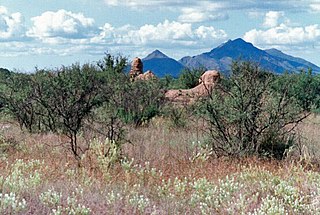
La Misión de San Gabriel de Guevavi was founded by Jesuit missionary priests Eusebio Kino and Juan María de Salvatierra in 1691. Subsequent missionaries called it San Rafael and San Miguel, resulting in the common historical name of Mission Los Santos Ángeles de Guevavi.
Ofelia Zepeda is a Tohono O'odham poet and intellectual. She is Regents' Professor of Tohono O'odham language and linguistics and Director of the American Indian Language Development Institute (AILDI) at The University of Arizona. Zepeda is the editor for Sun Tracks, a series of books that focuses on the work of Native American artists and writers, published by the University of Arizona Press.
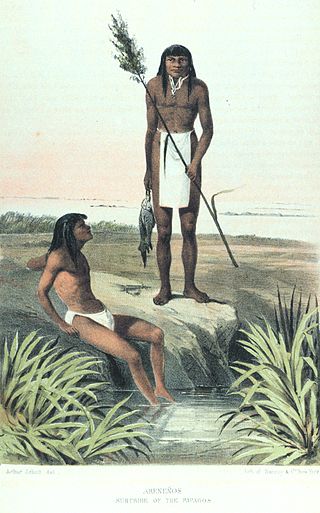
The Hia C-eḍ Oʼodham, also known as Areneños or Sand Papagos, are a Native American peoples whose traditional homeland lies between the Ajo Range, the Gila River, the Colorado River, and the Gulf of California. They are currently unrecognized at both the state and federal level in the United States and Mexico, although the Tohono Oʼodham Nation has a committee for issues related to them and has land held in trust for them. They are represented by a community organization known as the Hia-Ced Oʼodham Alliance. The Hia C-eḍ Oʼodham are no longer nomadic, and the majority today live in or near Ajo, Arizona, or the small settlements of Blaisdell and Dome near Yuma.
The Sobaipuri were one of many indigenous groups occupying Sonora and what is now Arizona at the time Europeans first entered the American Southwest. They were a Piman or O'odham group who occupied southern Arizona and northern Sonora in the 15th–19th centuries. They were a subgroup of the O'odham or Pima, surviving members of which include the residents of San Xavier del Bac which is now part of the Tohono O'odham Nation and the Akimel O'odham.

The Tepecano language is an extinct indigenous language of Mexico belonging to the Uto-Aztecan language-family. It was formerly spoken by a small group of people in Azqueltán, Jalisco, a small village on the Río Bolaños in the far northern part of the state, just east of the territory of the Huichol people. Most closely related to Southern Tepehuán of the state of Durango, Tepecano was a Mesoamerican language and evinced many of the traits that define the Mesoamerican Linguistic Area. So far as is known, the last speaker of Tepecano was Lino de la Rosa, who was still living as of February 1980.

The Pima Bajo people are indigenous people of Mexico who reside in a mountainous region along the line between the states of Chihuahua and Sonora in northern Mexico. They are related to the Pima and Tohono O’odham of Arizona and northern Sonora, speaking a similar but distinct language.
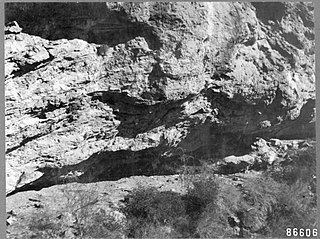
The Yavapai Wars, or the Tonto Wars, were a series of armed conflicts between the Yavapai and Tonto tribes against the United States in the Arizona Territory. The period began no later than 1861, with the arrival of American settlers on Yavapai and Tonto land. At the time, the Yavapai were considered a band of the Western Apache people due to their close relationship with tribes such as the Tonto and Pinal. The war culminated with the Yavapai's removal from the Camp Verde Reservation to San Carlos on February 27, 1875, an event now known as Exodus Day.
Madeleine Mathiot was a Professor emerita of Linguistics at the University at Buffalo in Buffalo, New York.












